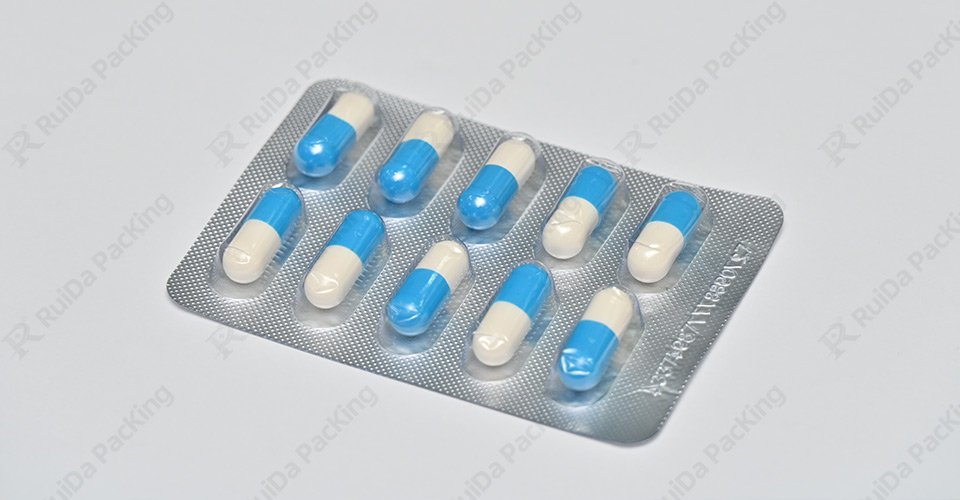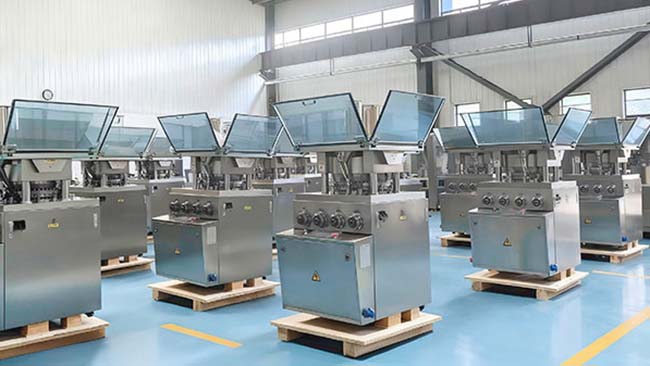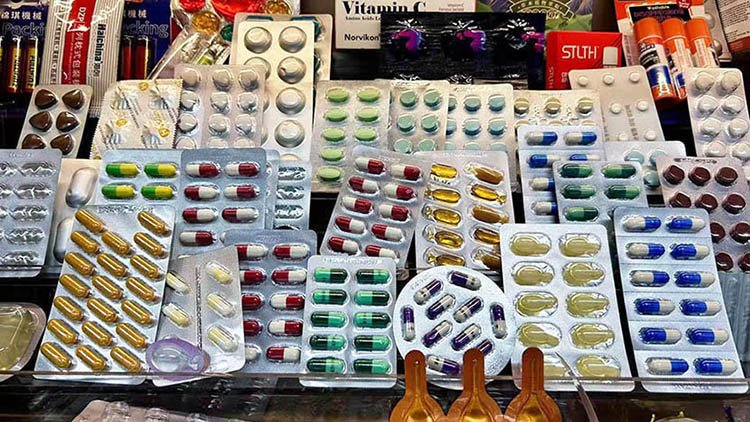Η αποτελεσματική συσκευασία των καψουλών είναι ζωτικής σημασίας για τη διασφάλιση της ασφάλειας των προϊόντων, της συμμόρφωσης και της ικανοποίησης των πελατών. Είτε δραστηριοποιείστε στον φαρμακευτικό κλάδο, στον κλάδο των θρεπτικών συστατικών ή των συμπληρωμάτων διατροφής, ο τρόπος με τον οποίο συσκευάζετε τις κάψουλες μπορεί να επηρεάσει τη διάρκεια ζωής τους, τη χρηστικότητά τους και την ελκυστικότητά τους στην αγορά. Αυτός ο απόλυτος οδηγός θα σας καθοδηγήσει στα βασικά βήματα και τις σκέψεις για τη συσκευασία καψουλών, βοηθώντας σας να βελτιστοποιήσετε τη διαδικασία σας και να παραδώσετε ένα προϊόν υψηλής ποιότητας.
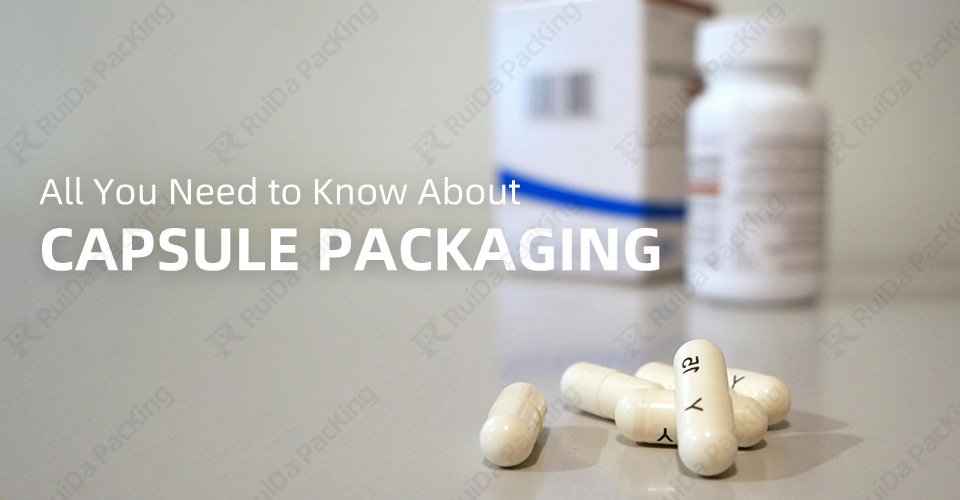
1. Κατανόηση των απαιτήσεων συσκευασίας καψουλών
– 1.1. Κανονιστική Συμμόρφωση
– Η συσκευασία καψουλών δεν αφορά μόνο την αισθητική. Αφορά την τήρηση αυστηρών κανονιστικών προτύπων. Ανάλογα με τον κλάδο σας, ίσως χρειαστεί να συμμορφώνεστε με τους κανονισμούς FDA, GMP ή ISO. Για παράδειγμα, οι φαρμακευτικές κάψουλες συχνά απαιτούν συσκευασία ανθεκτική στα παιδιά για την αποφυγή τυχαίας κατάποσης. Να βεβαιώνεστε πάντα ότι η συσκευασία σας πληροί τις απαραίτητες νομικές απαιτήσεις για να αποφύγετε πρόστιμα ή ανακλήσεις.
– 1.2. Προστασία Προϊόντος
– Οι κάψουλες είναι ευαίσθητες σε περιβαλλοντικούς παράγοντες όπως η υγρασία, το φως και το οξυγόνο. Η σωστή συσκευασία διασφαλίζει ότι παραμένουν αποτελεσματικές και ασφαλείς για κατανάλωση. Τα υλικά φραγμού, όπως το αλουμινόχαρτο ή τα εξειδικευμένα πλαστικά, μπορούν να προστατεύσουν τις κάψουλες από την υποβάθμιση και τη μόλυνση, παρατείνοντας τη διάρκεια ζωής τους.
2. Επιλογή των κατάλληλων υλικών συσκευασίας
Η επιλογή των κατάλληλων υλικών συσκευασίας είναι ένα από τα πιο κρίσιμα βήματα στη διαδικασία συσκευασίας καψουλών. Το υλικό που θα επιλέξετε θα καθορίσει πόσο καλά προστατεύονται οι κάψουλες σας, πόσο φιλική προς το χρήστη είναι η συσκευασία, ακόμη και πώς γίνεται αντιληπτό το προϊόν σας από τους καταναλωτές. Παρακάτω, θα εξερευνήσουμε τις πιο συνηθισμένες επιλογές συσκευασίας και τα πλεονεκτήματα και τα μειονεκτήματά τους.
2.1. Μπουκάλια και βάζα
Τα μπουκάλια και τα βάζα είναι από τις πιο δημοφιλείς επιλογές για τη συσκευασία καψουλών, ειδικά για προϊόντα χύμα όπως τα συμπληρώματα διατροφής.
– Πλεονεκτήματα:
– Οικονομικά αποδοτικό: Τα μπουκάλια είναι γενικά φθηνά στην παραγωγή, καθιστώντας τα ιδανικά για επιχειρήσεις που θέλουν να ελαχιστοποιήσουν το κόστος.
– Ευκολία χρήσης: Είναι εύκολα στην πλήρωση, τη σφράγιση και την επισήμανση, απαιτώντας ελάχιστο εξειδικευμένο εξοπλισμό.
– Πολυχρηστικότητα: Διατίθενται σε διάφορα μεγέθη, σχήματα και υλικά (π.χ. πλαστικό ή γυαλί), τα μπουκάλια μπορούν να φιλοξενήσουν διαφορετικές ποσότητες και τύπους καψουλών.
– Επαναχρησιμοποίηση: Πολλά μπουκάλια διαθέτουν επανασφραγιζόμενα καπάκια, επιτρέποντας στους καταναλωτές να τα επαναχρησιμοποιήσουν για άλλους σκοπούς.
– Μειονεκτήματα:
– Περιορισμένη προστασία: Ενώ τα μπουκάλια προστατεύουν τις κάψουλες από φυσικές βλάβες, ενδέχεται να μην προσφέρουν επαρκείς ιδιότητες φραγμού έναντι της υγρασίας ή του οξυγόνου, εκτός εάν συνδυάζονται με αποξηραντικά ή εξειδικευμένες επενδύσεις.
– Ογκώδες μέγεθος: Τα μπουκάλια μπορούν να καταλαμβάνουν περισσότερο χώρο στα ράφια σε σύγκριση με άλλες επιλογές συσκευασίας, γεγονός που μπορεί να αυξήσει το κόστος αποστολής και αποθήκευσης.
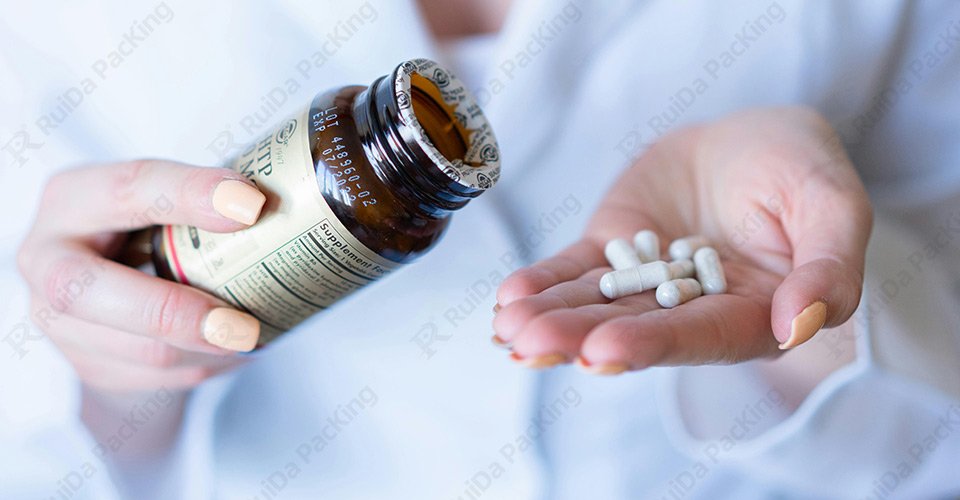
2.2. Συσκευασίες κυψέλης
Οι συσκευασίες κυψέλης είναι μια επιλογή συσκευασίας υψηλής ποιότητας, που χρησιμοποιούνται συχνά για φαρμακευτικά προϊόντα ή συμπληρώματα υψηλής αξίας.
– Πλεονεκτήματα:
– Ανώτερη προστασία: Οι συσκευασίες κυψέλης παρέχουν εξαιρετικές ιδιότητες φραγμού, προστατεύοντας τις κάψουλες από την υγρασία, το φως και τη μόλυνση. Κάθε κάψουλα είναι ξεχωριστά σφραγισμένη, εξασφαλίζοντας μέγιστη προστασία.
– Ασφαλές για παραβίαση: Οι συσκευασίες κυψέλης είναι ανθεκτικές σε παραβίαση, δίνοντας στους καταναλωτές εμπιστοσύνη στην ασφάλεια του προϊόντος.
– Φορητότητα: Ο συμπαγής σχεδιασμός τους τα καθιστά εύκολα στη μεταφορά, ιδανικά για καταναλωτές εν κινήσει.
– Ακρίβεια δοσολογίας: Κάθε διαμέρισμα κυψέλης μπορεί να σχεδιαστεί για να περιέχει μια συγκεκριμένη δόση, μειώνοντας τον κίνδυνο υπερδοσολογίας ή υποδοσολογίας.
– Μειονεκτήματα:
– Υψηλότερο κόστος: Οι συσκευασίες κυψέλης είναι πιο ακριβές στην παραγωγή λόγω των υλικών και των μηχανημάτων που απαιτούνται.
– Σύνθετη Παραγωγή: Η διαδικασία δημιουργίας συσκευασιών blister είναι πιο επίπονη και απαιτεί εξειδικευμένο εξοπλισμό.
2.3. Φακελάκια και φακελάκια
Τα σακουλάκια και οι θήκες είναι ελαφριές, εύκαμπτες επιλογές συσκευασίας που χρησιμοποιούνται συχνά για προϊόντα μίας δόσης ή για προϊόντα φιλικά προς το ταξίδι.
– Πλεονεκτήματα:
– Ελαφρύ και συμπαγές: Οι θήκες καταλαμβάνουν ελάχιστο χώρο, μειώνοντας το κόστος αποστολής και αποθήκευσης.
– Προσαρμόσιμο: Μπορούν να σχεδιαστούν σε διάφορα σχήματα και μεγέθη, με επιλογές για επανασφραγιζόμενα φερμουάρ ή εγκοπές για σκίσιμο.
– Οικονομικά αποδοτικό για μικρές ποσότητες: Ιδανικά για προϊόντα μίας δόσης ή δείγματος, τα σακουλάκια αποτελούν μια προσιτή επιλογή για συσκευασίες μικρής κλίμακας.
– Μειονεκτήματα:
– Περιορισμένη διάρκεια ζωής: Τα σακουλάκια είναι λιγότερο ανθεκτικά από τα μπουκάλια ή τις συσκευασίες κυψέλης και ενδέχεται να μην παρέχουν επαρκή προστασία για μακροχρόνια αποθήκευση.
– Περιβαλλοντικές ανησυχίες: Πολλές θήκες είναι κατασκευασμένες από μη ανακυκλώσιμα υλικά, τα οποία ενδέχεται να μην ευθυγραμμίζονται με τους στόχους βιωσιμότητας.
Συγκριτικός Πίνακας: Υλικά συσκευασίας
Τύπος συσκευασίας | Επίπεδο προστασίας | Κόστος | Ιδανικό για |
Μπουκάλια/Βάζα | Μέτριος | Χαμηλός | Συσκευασία χύμα, μακροχρόνια αποθήκευση |
Συσκευασίες κυψέλης | Ψηλά | Μέσον | Προϊόντα υψηλής αξίας, εφάπαξ δόσης |
Σακουλάκια/Φακελάκια | Χαμηλή έως Μέτρια | Χαμηλός | Προϊόντα μιας χρήσης, εν κινήσει |
3. Σχεδιασμός Αποτελεσματικής Συσκευασίας Κάψουλας
– 3.1. Απαιτήσεις επισήμανσης
– Η συσκευασία σας πρέπει να περιλαμβάνει βασικές πληροφορίες όπως το όνομα του προϊόντος, τις οδηγίες δοσολογίας, την ημερομηνία λήξης και τον αριθμό παρτίδας. Βεβαιωθείτε ότι οι ετικέτες είναι σαφείς, ευανάγνωστες και συμμορφώνονται με τους κανονισμούς του κλάδου.
– 3.2. Εμπορική ταυτότητα και αισθητική
– Η συσκευασία είναι συχνά το πρώτο σημείο επαφής μεταξύ του προϊόντος σας και του καταναλωτή. Χρησιμοποιήστε εντυπωσιακά σχέδια, ζωντανά χρώματα και το λογότυπο της επωνυμίας σας για να δημιουργήσετε μια αξέχαστη εντύπωση.
– 3.3. Φιλικά προς το χρήστη χαρακτηριστικά
– Ενσωματώστε χαρακτηριστικά όπως καπάκια που ανοίγουν εύκολα, επανασφραγιζόμενες θήκες ή εγκοπές για να βελτιώσετε την εμπειρία χρήστη. Αυτές οι μικρές λεπτομέρειες μπορούν να επηρεάσουν σημαντικά την ικανοποίηση των πελατών.
4. Εξοπλισμός Συσκευασίας και Αυτοματισμός
– 4.1. Χειροκίνητη έναντι αυτοματοποιημένης συσκευασίας
– Η χειροκίνητη συσκευασία είναι κατάλληλη για μικρής κλίμακας εργασίες, αλλά μπορεί να είναι χρονοβόρα και επιρρεπής σε σφάλματα. Τα αυτοματοποιημένα συστήματα, αν και πιο ακριβά εξαρχής, προσφέρουν μεγαλύτερη αποτελεσματικότητα και συνέπεια.
– 4.2. Βασικός εξοπλισμός για συσκευασία καψουλών
– Οι μηχανές γεμίσματος και πώματος μπουκαλιών, οι μηχανές συσκευασίας σε μπλίστερ και οι μηχανές σφράγισης σακουλών είναι απαραίτητες για την απλοποίηση της διαδικασίας συσκευασίας.
– 4.3. Συντήρηση και Βαθμονόμηση
– Η τακτική συντήρηση και βαθμονόμηση του εξοπλισμού σας διασφαλίζουν σταθερή απόδοση και αποτρέπουν τον δαπανηρό χρόνο διακοπής λειτουργίας.
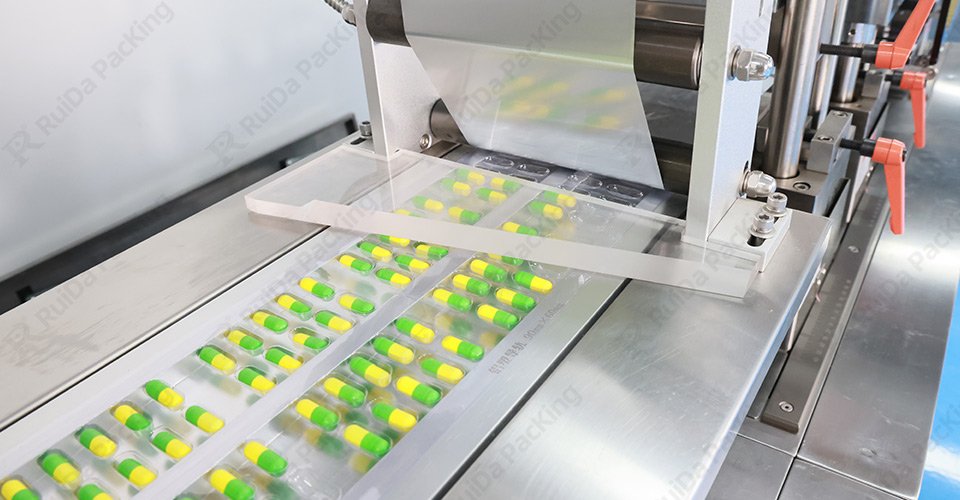
5. Έλεγχος ποιότητας και δοκιμές
– 5.1. Έλεγχος διαρροών
– Βεβαιωθείτε ότι η συσκευασία σας είναι αεροστεγής για να αποτρέψετε τη μόλυνση και την εισχώρηση υγρασίας.
– 5.2. Δοκιμή σταθερότητας
– Διεξάγετε δοκιμές για να αξιολογήσετε πώς η συσκευασία σας προστατεύει τις κάψουλες υπό διάφορες περιβαλλοντικές συνθήκες, όπως η θερμοκρασία και η υγρασία.
– 5.3. Έλεγχος παραβίασης
– Βεβαιωθείτε ότι η συσκευασία σας πληροί τα πρότυπα ασφαλείας για να διασφαλίσετε την ασφάλεια των καταναλωτών.
6. Ζητήματα αποθήκευσης και μεταφοράς
– 6.1. Περιβαλλοντικοί Παράγοντες
– Οι κάψουλες είναι ευαίσθητες στη θερμοκρασία, την υγρασία και το φως. Φυλάξτε τις σε δροσερό και ξηρό μέρος για να διατηρήσετε την ποιότητά τους.
– 6.2. Συσκευασία για αποστολή
– Χρησιμοποιήστε ανθεκτική εξωτερική συσκευασία και υλικά προστασίας για την προστασία των καψουλών κατά τη μεταφορά. Εξετάστε το ενδεχόμενο χρήσης μονωμένης συσκευασίας για προϊόντα ευαίσθητα στη θερμοκρασία.
Σύναψη
Συσκευασία καψουλών απαιτεί αποτελεσματικά προσεκτικό σχεδιασμό, τα σωστά υλικά και έμφαση στην ποιότητα. Ακολουθώντας αυτόν τον απόλυτο οδηγό, μπορείτε να διασφαλίσετε ότι οι κάψουλες σας είναι προστατευμένες, συμμορφώνονται με τις απαιτήσεις και είναι έτοιμες να εντυπωσιάσουν τους πελάτες σας. Να θυμάστε ότι η εξαιρετική συσκευασία όχι μόνο προστατεύει το προϊόν σας, αλλά και ενισχύει τη φήμη της επωνυμίας σας.
